At Dublin’s most prestigious location, Shrewsbury Road in Ballsbridge, Dublin 4, properties usually come to the market steeped in stories of extraordinary sale prices, multimillion-euro redevelopments and high-profile names including billionaires Denis O’Brien and Dermot Desmond.
Occasionally, though, a quiet house like number 5 is put up for sale; in the case of this warmly attractive semidetached six-bed home on 0.4 acres, it’s for only the second time since it was built, in 1932. Now called Ballyfoyle, after the Co Kilkenny townland from which one of the now deceased owners hailed, it was named Karlsruhe by its first owners, the pork butcher Charles Seezer and his wife, Marie.
In 1900, Seezer opened his shop at 40 Thomas Street. He was one of many German pork butchers in Dublin who included Stein, Stumpf, Hafner, Fernbach, Olhausen and Horlacher. After Seezer died, in 1950, his sons took over the business; its beautiful blue-and-white tiled frontage and brass-framed window feature in Éamonn Mac Thomáis’s 1970s TV series Dublin – A Personal View.
Marie Seezer died in 1965, and in February 1966 a new family moved in to Ballyfoyle with their six children; a seventh was born soon after, and the eighth some years later. “Lots of the houses on this road had big families,” say two of the daughters. “We were all in and out of each other’s houses all the time. There was a pool in one, and you were allowed a swim if you did an hour of gardening.” The road even had a football team.
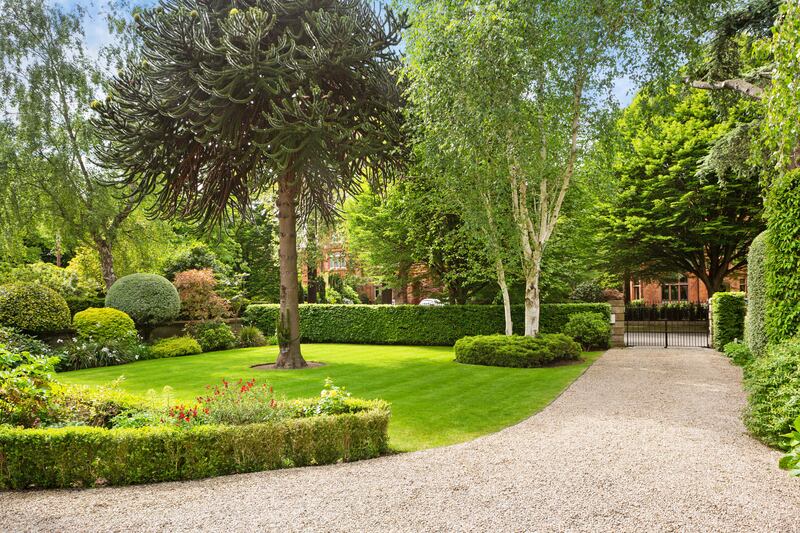
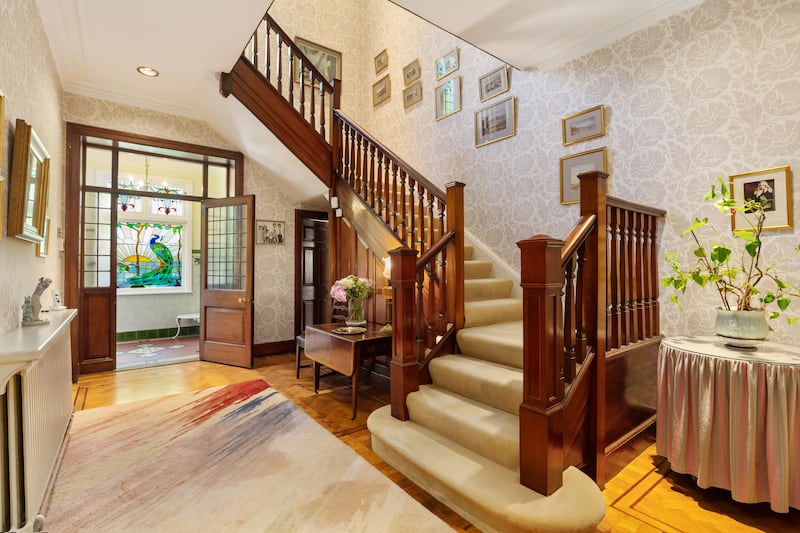
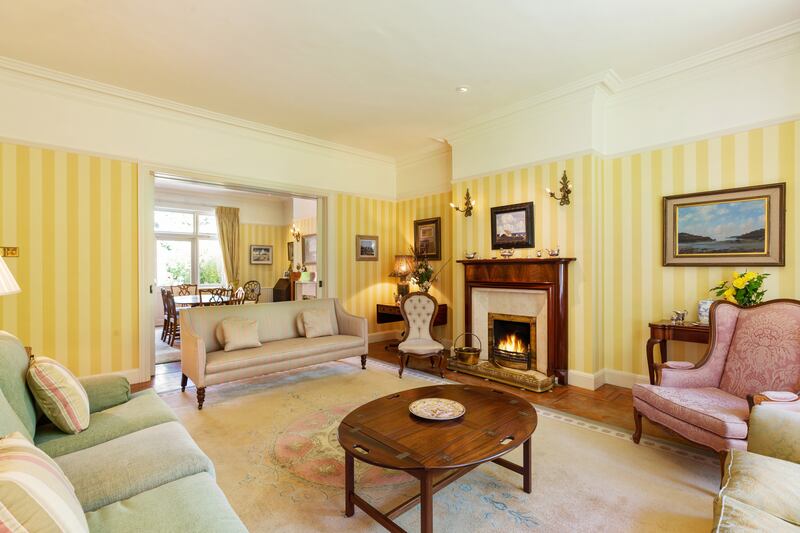
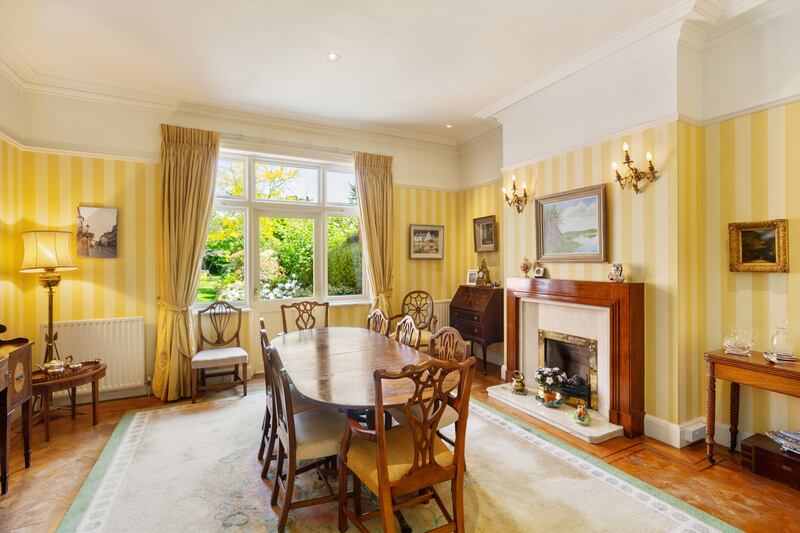
Ballyfoyle is set well back from the road, which has little through traffic since the ban on turning right from Merrion Road, about 100m away, was implemented. The wide front garden is lined with trees and flower beds, and at the centre of the lawn is a monkey puzzle with huge, prickly storm-defying fruit. There is space for a few cars on the gravelled drive, secured by electric gates. “There used to be tarmac here,” says one daughter. “It was ideal for playing tennis against the house wall.”
Once through the double front door, the first of Ballyfoyle’s exquisite stained-glass panels comes to life; a lustrous peacock perches in the entrance lobby, his feathers highlighting the blues and greens of the arts and crafts-style wall tiles. Other original features include fireplaces, brass window catches and the finest oak parquet floors downstairs, with herringbone in the hall and intricate squares in the reception rooms.
To the right of the gallery-style hall, papered in a soft grey marigold pattern, is a cosy front livingroom. Next to this, with stained-glass panels in the bay window, is a more formal drawingroom with a mahogany fireplace and pocket doors to the diningroom. A glass door opens from here to the back garden, and it’s easy to imagine new owners extending from here to capitalise on the southerly light; the current floor area is 348 sq m (3,750 sq ft).
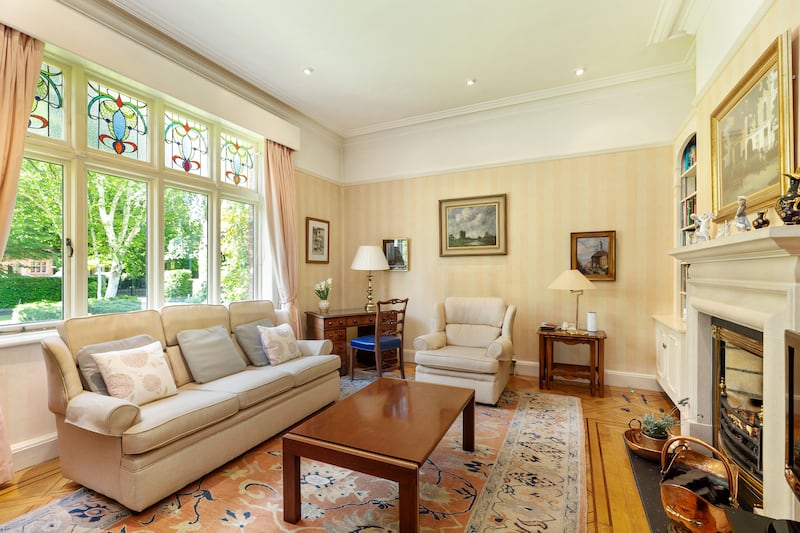
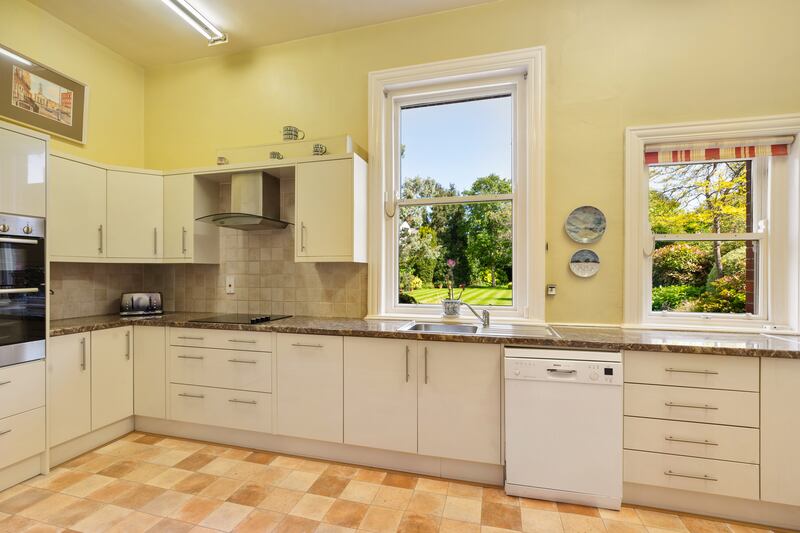
Across the hall, a cloakroom and guest toilet retain their 1930s tiles, and there are more behind the wood-clad walls of the breakfastroom. Light pours in here from a tall window, and the kitchen off it has a lovely view of the back garden. The daughters recall the ritual of Sunday lunches with extended family, the siblings exchanging news with their parents while the grandchildren played in “the park”, as one named it. There are seats and hiding places aplenty, sheltered by trees and lush planting. “The gardens were our mother’s pride and joy,” the daughters say.
Every corner of the house has a memory of secrets shared, friends welcomed, boyfriends interviewed; their parents enjoyed breakfast and lunch on the patio and in the added-on sunroom. A door leads from the utility room to the side passage, beyond which is a large garage that could be redeveloped into separate accommodation or incorporated into the house, subject to planning permission. The house is not listed on the Record of Protected Structures, but is within a residential conservation area. The Ber is D2.
Upstairs, the stairs turn twice and the generous landing is lit by a decorative window. There are five double bedrooms at this level; two at the front and three at the rear, and most have built-in wardrobes and painted cast-iron fireplaces. There are also two bathrooms.

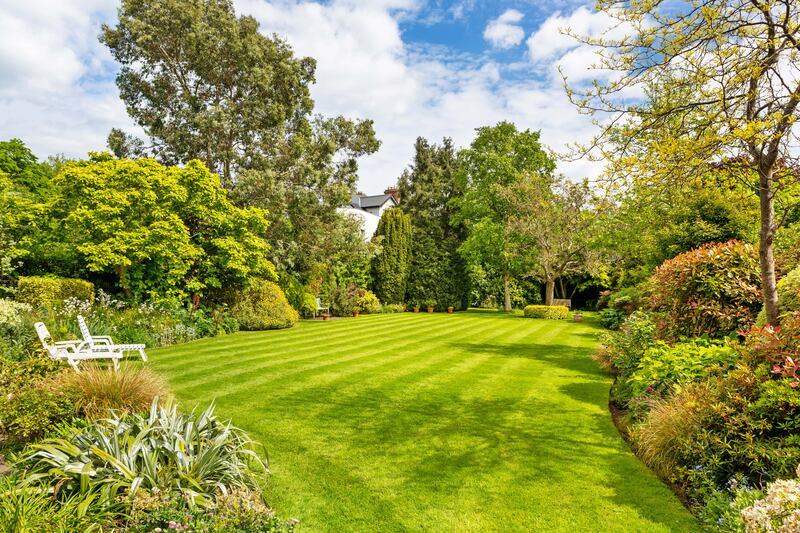
At the top of the house is a sixth bedroom with a 2.4m-high ceiling giving heaps of headroom; beside this, a case room and attic space have potential for a further bedroom with en suite.
Ballyfoyle is likely to welcome a third family before long: undoubtedly they will upgrade and enlarge it, but its timeless charm is sure to endure. The daughters recall their father coming home from viewing properties to which he might downsize, and saying, “This is the nicest house I’ve seen today.”
With the upper end of the residential market still relatively robust, and given the proximity to prime schools, sports clubs, shops, sea and city, Simon Ensor of Sherry FitzGerald is seeking €6.5 million for number 5. Ensor has sold nine houses on the road, including number 7 next door, formerly owned by property developer Larry O’Mahony, in 2015 for €4.8m. He also sold numbers 1 and 3, once owned by financier Derek Quinlan, in 2013 for €2.5m and €2m respectively.














